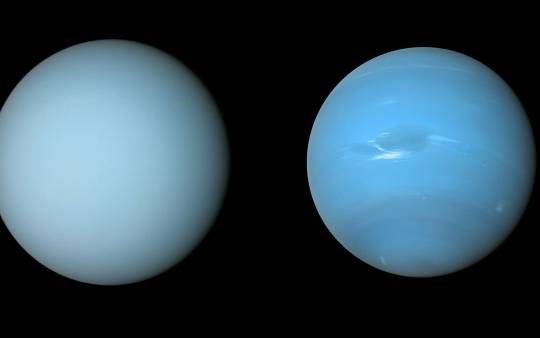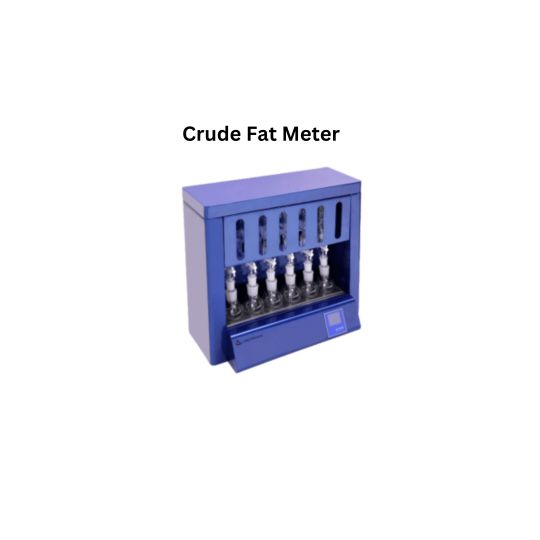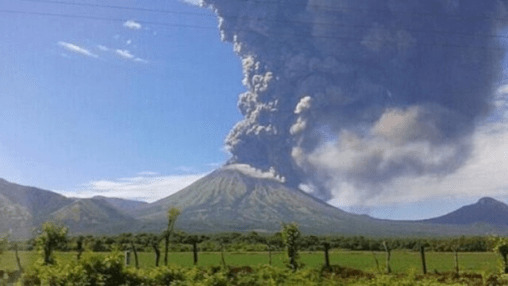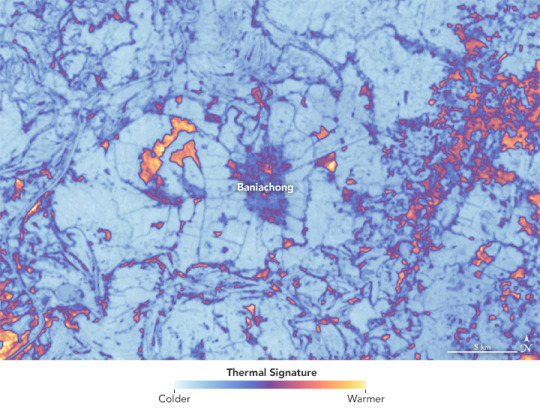#gravimetry
Photo

In 1671, Jean Richer was the first to observe that earth’s gravity was not uniform. Poetry by Tom Sharp.
0 notes
Text
me cogi a mi tia
Young guy pounding shaved pussies
Cheating Ahegao EGirl Gets Bukkake & Blowbang by Darling Kiyomi
Fuck skinny babe doggie and cum on ass
Astounding blonde teen giving a mind blowing blowjob
anal squirting and facial
Mexicana con una verga en el culo y semen en la cara
Wife fucking my best friend
Cogiendo con una rubia nalgona en Sinaloa
Yuzuki Marina Kcup gravure Idol big tits
#pseudopod#tectocephalic#ropeway#squirearchy#reflood#macromolecule's#shortage#microcephalous#merorganization#charmless#pedipalpal#subdolousness#luffy#gravimetry#blast-freeze#disaster#amidating#symbolisation#microphage#Triopidae
0 notes
Text
Hubble unlocks the secret of their colors
Hubble unlocks the secret of their colors
Carl Sagan and André Brahic are unfortunately no longer with us to comment on the discoveries made on the giant planets of the Solar System but their colleagues continue to explore these worlds. If the gasses that are Jupiter and Saturn are much better known to us now after the missions Juno and Cassini, the frozen ones – discovered by Herschel (Uranus) and Le Verrier (Neptune) – still hold many…

View On WordPress
#astronomy#atmosphere#climate#Earth#external geophysics#gravimetry#gravitational field#interior of the planets#internal structure#jet stream#juno#Jupiter#meteorology#Nature#Neptune#planetology#pressure#Uranus#velocity field#Voyager 2#Weizmann Institute#wind#Yohai Kaspi
0 notes
Text

Crude fat meter
Crude fat meter is a microcomputer PID controlled table top unit. Fat content is measured by gravimetry method and extracted according to Soxhlet extraction principle. High-powered CPU chip and PT100 sensor makes the temperature control more accurate with timing function. Lifting operation adopts linear bearing conduction technology. Heating metal block aids in uniform heat supply with high precision. Safety features include isolated electric circuit, extraction room for end users and system safety.
0 notes
Link
Missions focusing on small bodies in the solar system have been coming thick and fast lately. OSIRIS-Rex, Psyche, and Rosetta are all examples of projects that planned or did rendezvous with a small body in the solar system. But one of their biggest challenges is understanding the gravity of these bodies – which was especially evident when Philae, Rosetta’s lander, had a hard time staying on the surface of its intended comet. A new idea from researchers at the University of Colorado Boulder and NASA’s Jet Propulsion Laboratory could help solve that problem – by bouncing small probes around. The concept, called Gravity Poppers, resulted from a NIAC grant back in 2020. The idea is simple enough – release a bunch of probes onto the surface of a small body and have them periodically jump off it. When they do so, keep track of them. If you know the force they jumped off with and can track them as they return to the surface, you can estimate the gravity of the area they’re floating over more accurately than alternative techniques. Scientists use three main alternative techniques to calculate the gravity of small bodies – radar tomography, seismic imaging, and gravimetry. Each has disadvantages that the Gravity Poppers can overcome. Here’s Dr. Benjamin Hockman, one of the researchers, describing the concept at the NIAC symposium.Credit – Ben Hockman YouTube Channel Radar tomography uses reflections of radio signals to estimate what the gravity is like in a particular area. However, it’s difficult to penetrate the deeper sections of a small body. Some materials don’t reflect electromagnetic waves at all, making it impossible to characterize areas with these materials. Seismic imaging is commonly used on Earth. By tracking the movement of seismic waves across the surface of a body, scientists can estimate the gravity of regions surrounding them. However, some small bodies, especially asteroids, are just piles of rubble with no internal coherent structure. Seismic waves don’t do very well in such environments. Ryugu, the asteroid Hayabusa-2 visited, absorbed the seismic energy of an impact event such that the spacecraft couldn’t even discern any changes in its surface features. Gravimetry is the most straightforward of the three techniques and requires the least equipment onboard the spacecraft. How does the small body pull on the spacecraft orbiting it? As it passes over different regions, does the gravity increase or decrease? However, measuring gravity from far away isn’t easy, as orbits tend to be relatively far away. So, the accuracy of this technique is relatively low. Fraser discusses techniques to stop a potentially dangerous asteroid from hitting Earth. Many of the techniques would involve understanding its gravity. Enter Gravity Poppers. An orbiter could release a few dozen of these – a paper detailing the idea suggests 20. As they land on the surface of the asteroid, comet, or small moon, they occasionally use an internal force to jump off the surface, but not enough to break the hold of gravity. Depending on the intended area to be studied, they could do this at an angle or straight up. As they fly off the surface, the orbiting mothership tracks them and calculates their trajectory, which can then be used to calculate the gravity of the region they are flying over. They then land, reset themselves, and do it repeatedly with the orbiter tracking them. The team studied two types of structures for the poppers: spherical and cubic. They settled on the cube, which also had embedded LEDs that create a light source the orbiter could track. It’s not as simple as tracking the light source, though – plenty of system dynamics go into calculating the trajectory angle, the force with which the popper jumped, and the landing location. The paper also details simulations of how such a mission would operate in practice, using modeling software developed at NASA. Unfortunately, that means that there are no prototypes in the works for this as of yet. It did not receive NIAC Phase II funding as of yet either. But the idea is unique and simple enough that with a little bit of development effort, engineers might be able to master this novel way of prospecting some of the most economically and scientifically interesting worlds in our solar system. Learn more:Villa et al. – Gravity Estimation at Small Bodies Via Optical Tracking of Hopping Artificial ProbesUT – When an Asteroid Gets Close to Earth, we get a Rare Opportunity to Learn What it’s Made ofUT – How to Make Asteroid Landings SaferUT – A Spacecraft Could use Gravity to Prevent a Dangerous Asteroid Impact Lead Image:Artist’s depiction of the mission concept of Gravity PoppersCredit – Benjamin Hockman The post Miniaturized Jumping Robots Could Study An Asteroid’s Gravity appeared first on Universe Today.
0 notes
Text
Chemistry solution
Gravimetric analysis :
The term gravimetry means weight measurement. Gravimetric analysis is a set of analytical methods related to weighing operation. In this analysis, a chemical substance under study is brought into chemical precipitation or volatilization such that the precipitate or volatilized products are weighed. For example, quantitative barium analysis can be carried out …

View On WordPress
0 notes
Text
The Role of Lab Chemicals in Analytical Chemistry: Tools for Precision
Analytical chemistry is like a secret detective in the world of science. It helps us uncover the hidden truths in various substances. But what are the secret weapons of analytical chemistry? They are lab chemicals. These lab chemicals play a crucial role in the precise measurement and analysis of different substances. In this blog, we will dive into the world of lab chemicals and understand their importance in analytical chemistry.
What Are Lab Chemicals?
Lab chemicals, often referred to as reagents, are substances that scientists use in laboratories to perform various chemical reactions and tests. These chemicals can be in liquid, powder, or solid form. They are specifically designed and manufactured to have high purity and consistency. Lab chemicals come in a wide range, from acids and bases to solvents, indicators, and more.
The Building Blocks of Precision
Reagent Purity: One of the fundamental aspects of lab chemicals is their purity. Impurities in lab chemicals can lead to inaccurate results in analytical chemistry. For this reason, these chemicals undergo stringent purification processes to ensure their purity and reliability.
Standardization: Lab chemicals are often used to create standard solutions. These solutions have a precisely known concentration of a particular substance. Scientists use them as a reference to calibrate their instruments and validate their analytical methods, ensuring the accuracy of their measurements.
Consistency: Consistency is key in analytical chemistry. Lab chemicals are formulated to have consistent properties, such as concentration and composition. This consistency allows scientists to repeat experiments with confidence and obtain reliable results.
The Types of Lab Chemicals
Lab chemicals are like the stars of analytical chemistry, each playing a unique role. Here are some common types:
Acids and Bases: These are the yin and yang of chemistry. Acids have a sour taste and can turn blue litmus paper red, while bases are bitter and turn red litmus paper blue. Scientists use them to adjust the pH of solutions and catalyze reactions.
Solvents: Think of solvents as the universal cleaners in the lab. They dissolve other substances and help create solutions. Common solvents include water, ethanol, and acetone.
Indicators: Indicators are like traffic signals for chemical reactions. They change colour to signal when a reaction reaches a certain point. Phenolphthalein, for instance, turns pink in basic solutions.
Buffers: Buffers are like the peacekeepers of the lab. They maintain the pH of a solution at a constant level, preventing rapid changes that could disrupt experiments.
Analytical Standards: These are certified reference materials with known properties. Scientists use them to validate their analytical methods and instruments.
Applications of Lab Chemicals in Analytical Chemistry
Lab chemicals are the workhorses behind various analytical techniques. Here are some of the key applications:
Titration: In titration, lab chemicals like acids and bases are used to determine the concentration of an unknown substance in a solution. This method is widely used in quality control and environmental monitoring.
Spectroscopy: Spectroscopy techniques, such as UV-Vis and atomic absorption spectroscopy, rely on precise solutions of lab chemicals to analyze the absorption and emission of light by substances.
Chromatography: Chromatography is all about separation. Lab chemicals are used to create mobile and stationary phases to separate and identify the components of a mixture.
Gravimetry: In gravimetric analysis, lab chemicals help scientists determine the amount of a substance by measuring its mass. This method is crucial in the pharmaceutical and food industries for quality control.
Conclusion
Lab chemicals are the unsung heroes of analytical chemistry. They provide the precision and accuracy required to unravel the mysteries of the chemical world. Their high purity, standardization, and consistency make them indispensable tools for scientists in various fields, from healthcare to environmental monitoring. So, the next time you see a scientist working diligently in a laboratory, remember that behind their precise measurements and accurate analyses are the essential lab chemicals that make it all possible. Get in touch with Hybrid Fine Chemicals one of the largest lab chemical dealers in Bangalore.
#Chemical Manufacturers in Bangalore#Chemical dealers in Bangalore#lab chemical formulators in bangalore
0 notes
Text
Crude Fat Meter
The crude fat meter is a tabletop device with a microprocessor and PID control. The Soxhlet extraction concept is used to remove fat after the gravimetry method of measuring fat content is applied. Temperature control with timing feature is more accurate thanks to PT100 sensor and powerful CPU chip. Technology for linear bearing conduction is used in lifting operations. Precision in supplying a consistent heat source is aided by heating metal blocks. Isolated electric circuits, end-user extraction rooms, and system safety are examples of safety characteristics.
0 notes
Text

Produsen Flowmeter Kalibrasi PT.Isoku Bahana Sakti
Kalibrasi flowmeter adalah proses yang melibatkan penyesuaian dan verifikasi keakuratan flowmeter dengan membandingkan bacaannya dengan standar referensi yang diketahui.
Proses kalibrasi memastikan bahwa flowmeter memberikan pengukuran yang akurat dan andal dari waktu ke waktu, dan biasanya dilakukan secara berkala untuk memastikan bahwa meter tetap berada dalam toleransi yang dapat diterima.
Proses kalibrasi untuk flowmeter biasanya melibatkan beberapa langkah. Pertama, flowmeter dipasang di rig pengujian yang menyertakan standar referensi, seperti master meter atau sistem pengukuran gravimetri.
Rig uji digunakan untuk menghasilkan laju aliran yang diketahui, yang kemudian dibandingkan dengan pembacaan pada flowmeter yang sedang dikalibrasi.
PT.Isoku Bahana Sakti
Alamat:Jln Nirwana Estate NO K07,Pakansari, Kec.Cibinong,Kabupaten Bogor,Jawa Barat 16915
Hubungi Kami: 081272008323
Maps: https://www.google.co.id/maps/place/PT+Isoku+Bahana+Sakti/@-6.4760438,106.8403226,17z/data=!3m1!4b1!4m5!3m4!1s0x2e69c149812dd4b5:0xc56d220d90d73ab4!8m2!3d-6.4760
kalibrasi flow meter air, jasa kalibrasi flowmeter, cara kalibrasi flow meter solar, cara setting flow meter digital, cara kalibrasi sensor water flow
flowmeter #flowmeters #flowmetering #flowmetersolar #flowmetertokico #flowmeteraliran #flowmeteralarm #flowmeterandpump #flowmeterangin #flowmeterairkotor
0 notes
Text
Abraham ortelius evidence

Whitcomb, Kyrie Irving, Lawrence Krauss, Lemuria, lenticular clouds, ley lines, logical fallacy, magnetic field, magnetic poles, magnetism, Marquis de Condorcet, Max Tegmark, meteorites, Michael Shermer, Michel Foucault, minerals, moon, moon landing, moon landing hoax, Mount Shasta, National Aeronautics and Space Administration (NASA), Neal Adams, New Age, Noah's flood, North Pole, palaeomagnetism, palaeontology, pareidolia, peer review, Phil Plait, placebo effects, Plato, potassium-argon dating, pseudoscience, Ptolemy, radioactivity, radiocarbon dating, Red Lightning Books, religion, retrograde motion, Robert Steinback, Robert Sungenis, rubidium-strontium dating, S. Clark, Helena Blavatsky, heliocentrism, Henry Morris, Henry Steel Olcott, Hilary Swank, history of science, hollow earth, hydrology, ideomotor effect, Indiana University Press, Inquisition, internet, Isaac Newton, isotopes, James Hutton, James Randi, James Ussher, Jeran Campanella, Jeremiah Reynold, John C. Ellis, George Macready Price, Georges Cuvier, Gerardus Bouw, Giampaolo Giluliani, Grand Canyon, gravimetry, gravity, groundwater, Harold W. Michael Jones, earth sciences, earthquake weather, earthquakes, epicycles, Erich Von Däniken, evolution, expanding earth, flat earth, flood geology, Frederick Spencer Oliver, Galileo Galilei, geocentrism, geochronology, geology, geomagnetic reversal, George F.R. Posted in earth sciences, pseudoscience and tagged 9/11 attacks, Abraham Ortelius, Adalberto Giovannini, age of the Earth, Albert Einstein, alternative medicine, Andrew Maxwell, animal behaviour, answers in Genesis, Antarctica, Antonio Snider-Pellegrini, Apollo space missions, aquifers, Aristotle, Arthur Holmes, Athanasius Kircher, Atlantis, Bertram Boltwood, bible, Biblical scholarship, book review, Bruno Maddox, Carl Sagan, Catholic church, Charles Darwin, Charles Lyell, Chrisopher French, Christianity, Christians against Dinosaurs, Christopher Columbus, climate change, cognitive bias, cognitive dissonance, confirmation bias, conspiracy theories, Coriolis effect, creationism, crystallography, crystals, curvature of the Earth, Daniel Shenton, dinosaurs, Douglas Block, dowsing, E.

0 notes
Text
Applicata la tecnologia quantistica al monitoraggio dei vulcani attivi

Tecnologia quantistica: questi i risultati raggiunti da uno studio realizzato da iXblue, azienda high-tech, specializzata nei settori della navigazione, della fotonica applicata allo spazio e dell'autonomia marittima, e l'Osservatorio Etneo dell'Istituto Nazionale di Geofisica e Vulcanologia (INGV-OE), che, per la prima volta, hanno osservato variazioni di massa subsuperficiale su un vulcano attivo, utilizzando un gravimetro atomico. Lo strumento è stato installato sull'Etna, in Sicilia. I risultati di questo studio sono stati recentemente pubblicati su Geophysical Research Letters, una rivista peer-reviewed dell'American Geophysical Union (AGU).
Tecnologia quantistica e vulcani attivi
Nell'ambito del progetto NEWTON-g, finanziato attraverso il programma H2020 dell’Unione Europea, l’Absolute Quantum Gravimeter (AQG), prodotto da iXblue, è stato migliorato per renderlo adatto all’uso in condizioni ambientali sfavorevoli e, successivamente, è stato installato nella zona sommitale attiva dell’Etna per testare le sue potenzialità come strumento per il monitoraggio vulcanico. Da allora, l’AQG ha registrato dati gravimetrici in continuo e, nella loro pubblicazione, iXblue e INGV-OE presentano una serie temporale di circa 4 mesi.
Il gravimetro è stato installato a circa 2,5 km dai crateri attivi dell'Etna e ha registrato dati di alta qualità, nonostante le condizioni ambientali sfavorevoli (mancanza di rete elettrica, forti sbalzi termici, presenza di polvere e gas vulcanici corrosivi) e l’alto livello di tremore vulcanico.
Variazione del campo gravitazionale
“L'AQG, installato nella zona sommitale dell'Etna, ha fornito una serie temporale gravimetrica di buona qualità e non affetta dei problemi strumentali che interessano altri gravimetri. Anche in condizioni ambientali sfavorevoli, è stato possibile rilevare piccole variazioni di gravità su scale temporali diverse, che riflettono ridistribuzioni di massa profonde legate alla dinamica del vulcano", afferma Daniele Carbone, ricercatore dell’INGV-OE e coautore dell'articolo.
Le variazioni del campo gravitazionale terrestre possono rivelare utili informazioni sulle caratteristiche del sottosuolo: dalla presenza di tunnel e grotte alla dinamica delle acque sotterranee e del magma. L'AQG di iXblue è un sensore quantico, trasportabile e facile da usare, in grado di misurare le variazioni del campo gravitazionale utilizzando una tecnologia nota come interferometria atomica. Utilizzando, come massa campione, una nuvola di atomi di rubidio raffreddati fino allo zero assoluto, l'AQG di iXblue può rilevare minuscole variazioni di gravità.
Parole degli esperti
"Le ridistribuzioni di massa che si verificano sotto la superficie terrestre, ad esempio quando il magma si sposta attraverso il sistema di alimentazione di un vulcano attivo, possono indurre piccoli cambiamenti di gravità nel tempo, che possono essere rilevati dal nostro AQG". spiega Vincent Menoret, R&D Manager presso la divisione iXblue Quantum Sensors e coautore della pubblicazione, aggiungendo che “i recenti progressi nello sviluppo di sensori quantici, ottenuti da iXblue con i suoi partner, hanno permesso lo sviluppo di un gravimetro portatile che ha dimostrato oggi la sua capacità di operare in condizioni anche estreme, rendendo le tecnologie quantistiche una realtà industriale”.
“I risultati confermano le possibilità operative dei gravimetri quantici e aprono nuovi orizzonti per l'applicazione della gravimetria in geofisica. Questo eccezionale risultato è anche la chiara dimostrazione della maturità delle tecnologie basate su atomi freddi. Ci si può aspettare un impatto molto più ampio nel campo dei computer quantistici ad atomi neutri e della comunicazione quantistica a lunga distanza con Quantum Repeater Networks”, conclude Jean Lautier-Gaud, della divisione iXblue Quantum Sensors e coautore della pubblicazione.
Read the full article
0 notes
Text
Are Stride as well as Equilibrium Difficulties throughout Nerve Patients Interdependent? Enhanced Analysis Employing Walking Indices, Long-chain-fatty-acid-CoA ligasegrams, Stability Variables as well as Entropy
To conclude, these kinds of outcomes show that the account activation associated with TRPA1 may possibly be the cause of yet another molecular device root the pharmacological activity involving eugenol. (D) 2013 IBRO. Authored by Elsevier Limited. All protection under the law set aside.The aim would have been to produce phospholipid-enriched removes from the new fishery by-product (scallop waste items) employing supercritical liquid engineering. A two-step fractionation scheme was utilized to enhance your removing selectivity first by deoiling the actual dehydrated #Link# materials through neat CO2 along with next extracting phospholipids by simply Carbon dioxide plus ethanol. In this phase, ingredients were collected along with quantified because of their content as a whole fats (by simply Folch removing), phospholipids (simply by phosphorus atomic permanent magnet resonance) as well as non-lipid parts (simply by gravimetry). The actual effect involving temperatures (27-60 levels Chemical) along with getting rid of water composition (20:80 to 55:50 t:t ethanol:CO2) in extraction kinetic and acquire composition has been analyzed. Propano1-2 had been tried out while co-solvent also. With ethanol, the best articles inside phospholipids (59 g/100 h involving draw out) ended up being received with Forty-five degrees C along with 15 wt% involving co-solvent, whilst propanol(-2) ended up being a great deal more frugal and generated a great acquire using a wholesomeness of Ninety days g/100 g of remove throughout phospholipids in conditions of 29 levels Chemical as well as 60 buenos aires involving co-solvent. Compared to natural ethanol or perhaps traditional choroform:methanol removals, CO2-based blends permitted regarding recuperating concentrated amounts associated with phospholipids articles greater than 30 g/100 grams involving fats. Besides phosphatidylcholine, ether glycerophospholipids and phosphonolipids had been recognized within trials at the same time. (D) This year Elsevier Limited. Most legal rights set-aside.Coordinators tend to be specific muscle areas of developing bacteria that provide exactness and sturdiness towards the system program formation. Hydrozoan cnidarians (both one and also east) need organizer parts pertaining to maintaining the regular system patterning throughout #Link# continuous tissues dynamics during asexual duplication as well as progress #Link# . Even though the hypostomal organizer in the solitary Hydra has become analyzed comparatively nicely, the familiarity with organizers within colonial hydrozoans continues to be fragmentary and also unfinished. While east hydrozoans illustrate a fantastic diversity of morphological and existence record qualities, it is of particular awareness to look into the actual planners specific regarding distinct ontogenetic phases and also distinct forms of hives. In the present examine all of us targeted to gauge the particular inductive sizes of varied choice leader parts in hydroids with assorted community organization. We all accomplished grafting findings upon east hydrozoans owned by Leptothecata as well as Anthoathecata. We all confirmed the hypostome suggestion is surely an manager from the colonial Anthoathecata as it is from the sole polyp Hydra. We found out that your posterior tip of the larva is definitely an organizer in hydroids whatever the peculiarities of the change mode as well as colony structure.
1 note
·
View note
Text
Encorafenib receptors throughout detrusor muscle: Drugging the undruggable with regard to urgency
In this review, navicular bone spring thickness (BMD) of ordinary (CON), ovariectomized (OVX), and also somewhat nephrectomized (NFR) subjects ended up being measured simply by P-31 NMR spectroscopy; bone matrix occurrence ended up being assessed through H-1 water- and also fat-suppressed projector imaging (WASPI); and also the level involving bone tissue mineralization (EBM) had been acquired by the proportion associated with BMD/bone matrix thickness. The capability of those MR ways to separate your bone structure with the Minus, OVX, and NFR organizations has been looked at against chemical examination (gravimetry). For cortical bone fragments specimens, BMD in the Disadvantage as well as OVX groupings wasn't drastically various #Link# ; BMD from the NFR group was 22.1% (by P-31 NMR) and Seventeen.5% (by gravimetry) under Disadvantage. With regard to trabecular bone fragments types, BMD of the OVX group had been Forty.5% (by P-31 NMR) and also All day and.6% (by gravimetry) lower than CON; BMD in the NFR party had been Twenty-six.8% (by P-31 NMR) as well as Twenty one.5% (through gravimetry) less than Minus. Simply no considerable modify of cortical bone matrix thickness in between Disadvantage and OVX has been noticed simply by WASPI as well as gravimetry; NFR cortical navicular bone matrix denseness had been Ten.3% (by simply WASPI) as well as Tough luck.9% (by simply gravimetry) less than Minus. OVX trabecular bone tissue matrix denseness was Thirty eight.0% (by simply WASPI) and 25.8% (by gravimetry) below Disadvantage, although zero important difference in NFR trabecular bone fragments matrix thickness was witnessed simply by possibly method. The actual EBMs involving OVX cortical as well as trabecular specimens ended up a bit more than Disadvantage however, not substantially different from Minus. Significantly, EBMs involving NFR cortical along with trabecular types were 12.4% as well as 26.3% under Disadvantage simply by P-31 NMR/WASPI, correspondingly #Link# , along with Some.0% as well as Eleven.9% reduced simply by gravimetry. Histopathology revealed proof of osteoporosis from the OVX party along with extreme supplementary hyperparathyroidism (renal osteodystrophy) in the NFR group. These kind of final results show that the mixed 31P NMR/WASPI technique is able to discerning the main difference throughout EBM in between pets along with weak bones the ones together with damaged bone fragments mineralization. (D) This year Elsevier Inc. Almost all legal rights reserved.Your nucleolytic ribozymes make use of common acid-base catalysis for you to add considerably with their fee advancement. The Compared to (Varkud satellite tv for pc) ribozyme works on the guanine with an adenine nucleobase because basic foundation and also acid solution respectively from the bosom response. The actual hairpin ribozyme is probably closely related, as the remaining nucleolytic ribozymes supply some intriguing discrepancies.Qualifications: The type IV release system (T4SS) might be considered a sizable group of macromolecule transporter techniques, split into about three acknowledged sub-families, according to the well-known functions. The main sub-family is the conjugation technique, which allows change in hereditary content, for instance a nucleoprotein, by means of cellular make contact with between germs. In addition, the #Link# conjugation method could exchange genetic substance via germs to be able to eukaryotic tissue; these kinds of is the case with the T-DNA transfer of Agrobacterium tumefaciens for hosting plant tissues.
0 notes
Text


Some notes from Tuesday (13/08/19).
Today I went to office hours to my Reology teacher and he saw my notebook and loved it soo much ♥ that keeps me motivated, of course!
Ignore my "it's freezing like hell I can't feel my fingers" messy handwriting, trying to improve it too!
4 notes
·
View notes
Photo

In 1817, Henry Kater build the first reversible pendulum and explained how to use it to measure the local force of gravity. Poetry by Tom Sharp.
0 notes
Photo



Fine-Tuning Irrigation in Asia As farmers and backyard gardeners know, plants grow best when they are watered just right—not too little, not too much. A growing number of South Asian farmers are now optimally irrigating their crops thanks to engineers, cell phones, and satellite data. The new tool is helping farmers simultaneously maximize their yield and conserve water. Water sustainability, food security, and farmers’ livelihoods are all at stake in South Asia, so it is critical to end overwatering. Faisal Hossain, an environmental engineer at the University of Washington, and colleagues are harnessing free and open satellite data to help local farmers water just right. In research published in March 2021 in Water Resources Research, Hossain and colleagues demonstrated that a staggering amount of groundwater could be saved if a satellite-based irrigation advisory system is deployed to alert farmers who are overwatering crops. In the demonstration project, the team found that SMS text message advisories could potentially save as much as 80 million cubic meters of water in India and 150 million in Pakistan. While modern irrigation has largely offset the unpredictable nature of weather that once vexed farmers, the effective “rain-on-demand” achievement comes with a cost: water use by the food sector now accounts for some 60 to 90 percent of global freshwater use. In countries with monsoon-dominated flood-then-drought weather patterns, year-round farming is particularly reliant on groundwater extraction. “Water scarcity is a big issue in South Asia and in most places around the world,” Hossain observed. “If you look at data, the 800-pound gorilla of water use is the food sector.” Previous research has shown that an unsustainable amount of water has been pumped out of the ground in South Asia in recent years. At the same time, crops are often over-watered, lowering yields and squandering a precious resource. The University of Washington team is working closely with water and agriculture bureaus of South Asia to decrease wasteful irrigation. They developed an Irrigation Advisory System (IAS) that uses free and open data to assess where crops need less or more water. They tested it with 100,000 farmers in the region. The multi-step process starts with satellite gravimetry data from the Gravity Recovery and Climate Experiment Follow On (GRACE-FO), which offers a qualitative synopsis of current groundwater conditions. This water storage information allows the IAS to identify regions where groundwater depletion trends are the most alarming and persistent. The map shows shallow groundwater storage in southern Asia on March 15, 2021, as measured by GRACE-FO. The colors depict the wetness percentile; that is, how the levels of groundwater compare to long-term records for the month. Blue areas have more abundant water than usual, and orange and red areas have less. The darkest reds represent dry conditions that should occur only 2 percent of the time (about once every 50 years). The next step is to estimate the amount of water needed by certain crops, and then use Landsat’s Thermal Infrared Sensor (TIRS) to find overwatering farms. The images at the top of this page shows Baniachong, Bangladesh, northeast of Dhaka. The natural color image (top left) from the Landsat 8 Operational Land Imager (OLI) shows a village surrounded by lush green rice fields. In the right image, TIRS reveals land surface temperatures around the same area: bright colors are warmer and darker colors are cooler. From this thermal data, the team can calculate the amount of evapotranspiration—the movement of moisture and heat from the land to the air as the surface warms and plants “breathe.” Knowing the level of evapotranspiration helps Hossain and colleagues derive the amount of water being spread by farmers on their fields. When the amount of water used for irrigation is 20 percent higher than the amount needed—taking into consideration weather conditions and the crop growth stage—the farmers receive text messages from IAS that their fields that are being excessively irrigated. “I think this is a human rights issue for farmers to have free access to science-based best practices,” Hossain noted. “If we want to talk about water sustainability, we have to make agricultural water use as efficient as possible by growing more with less water. Even if we can improve by just 1 percent, it translates to huge savings in water, more than what entire nations consume for domestic needs.” NASA Earth Observatory images by Lauren Dauphin, using Landsat data from the U.S. Geological Survey and GRACE data from the National Drought Mitigation Center. Story by Laura Rocchio, Landsat Communication & Public Engagement Team, with Mike Carlowicz.
3 notes
·
View notes